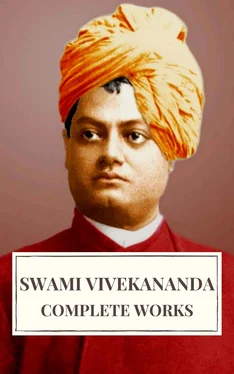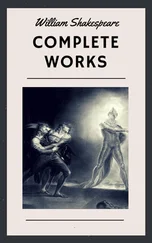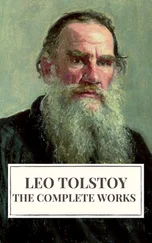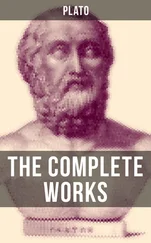Kapila does not believe in the unity of all souls. His analysis, so far as it goes, is simply marvellous. He is the father of Indian thinkers; Buddhism and other systems are the outcome of his thought.
According to his psychology, all souls can regain their freedom and their natural rights, which are omnipotence and omniscience. But the question arises: Where is this bondage? Kapila says it is without beginning. But if it is without beginning, it must be without end, and we shall never be free. He says that though bondage is without beginning, it is not of that constant uniform character as the soul is. In other words, nature (the cause of bondage) is without beginning and end, but not in the same sense as soul, because nature has no individuality; it is like a river which gets a fresh body of water every moment; the sum total of these bodies of water is the river, but the river is not a constant quantity. Everything in nature is constantly changing, but the soul never changes; so, as nature is always changing, it is possible for the soul to come out of its bondage.
The whole of the universe is built upon the same plan as a part of it. So, just as I have a mind, there is a cosmic mind. As in the individual, so in the universal. There is the universal gross body; behind that, a universal fine body; behind that, a universal mind; behind that, a universal egoism, or consciousness; and behind that, a universal intelligence. And all this is in nature, the manifestation of nature, not outside of it.
We have the gross bodies from our parents, as also our consciousness. Strict heredity says my body is a part of my parents’ bodies, the material of my consciousness and egoism is a part of my parents’. We can add to the little portion inherited from our parents by drawing upon the universal consciousness. There is an infinite storehouse of intelligence out of which we draw what we require; there is an infinite storehouse of mental force in the universe out of which we are drawing eternally; but the seed must come from the parents. Our theory is heredity coupled with reincarnation. By the law of heredity, the reincarnating soul receives from parents the material out of which to manufacture a man.
Some of the European philosophers have asserted that this world exists because I exist; and if I do not exist, the world will not exist. Sometimes it is stated thus: If all the people in the world were to die, and there were no more human beings, and no animals with powers of perception and intelligence, all these manifestations would disappear. But these European philosophers do not know the psychology of it, although they know the principle; modern philosophy has got only a glimpse of it. This becomes easy of understanding when looked at from the Sankhya point of view. According to Sankhya, it is impossible for anything to be, which has not as its material, some portion of my mind. I do not know this table as it is. An impression from it comes to the eyes, then to, the Indriya, and then to the mind; and the mind reacts, and that reaction is what I call the table. It is just the same as throwing a stone in a lake; the lake throws a wave towards the stone; this wave is what we know. What is external nobody knows; when I try to know it, it has to become that material which I furnish. I, with my own mind, have furnished the material for my eyes. There is something which is outside, which is only, the occasion, the suggestion, and upon that suggestion I project my mind; and it takes the form that I see. How do we all see the same things? Because we all have; similar parts of the cosmic mind. Those who have like minds will see like things, and those who have not will not see alike.
A Study Of The Sankhya Philosophy
Prakriti is called by the Sânkhya philosophers indiscrete, and defined as the perfect balance of the materials in it; and it naturally follows that in perfect balance there cannot be any motion. In the primal state before any manifestation, when there was no motion but perfect balance, this Prakriti was indestructible, because decomposition or death comes from instability or change. Again, according to the Sankhya, atoms are not the primal state. This universe does not come out of atoms: they may be the secondary or the tertiary state. The primordial material may form into atoms and become grosser and bigger things; and as far as modern investigations go, they rather point towards the same conclusion. For instance, in the modern theory of ether, if you say ether is atomic, it will not solve anything. To make it clearer, say that air is composed of atoms, and we know that ether is everywhere, interpenetrating, omnipresent, and that these air atoms are floating, as it were, in ether. If ether again be composed of atoms, there will still be spaces between every two atoms of ether. What fills up these? If you suppose that there is another ether still finer which does this, there will again be other spaces between the atoms of that finer ether which require filling up, and so it will be regressus ad infinitum , what the Sankhya philosophers call the “cause leading to nothing” So the atomic theory cannot be final. According to Sankhya, nature is omnipresent, one omnipresent mass of nature, in which are the causes of everything that exists. What is meant by cause? Cause is the fine state of the manifested state; the unmanifested state of that which becomes manifested. What do you mean by destruction? It is reverting to the cause If you have a piece of pottery and give it a blow, it is destroyed. What is meant by this is that the effects go back to their own nature, they materials out of which the pottery was created go back into their original state. Beyond this idea of destruction, any idea such as annihilation is on the face of it absurd. According to modern physical science, it can be demonstrated that all destruction means that which Kapila said ages ago — simply reverting to the cause. Going back to the finer form is all that is meant by destruction. You know how it can be demonstrated in a laboratory that matter is indestructible. At this present stage of our knowledge, if any man stands up and says that matter or this soul becomes annihilated, he is only making himself, ridiculous; it is only uneducated, silly people who would advance such a proposition; and it is curious that modern knowledge coincides with what those old philosophers taught. It must be so, and that is the proof of truth. They proceeded in their inquiry, taking up mind as the basis; they analysed the mental part of this universe and came to certain conclusions, which we, analysing the physical part, must come to, for they both must lead to the same centre.
You must remember that the first manifestation of this Prakriti in the cosmos is what the Sankhya calls “Mahat”. We may call it intelligence — the great principle, its literal meaning. The first change in Prakriti is this intelligence; I would not translate it by self-consciousness, because that would be wrong. Consciousness is only a part of this intelligence. Mahat is universal. It covers all the grounds of sub-consciousness, consciousness, and super-consciousness; so any one state of consciousness, as applied to this Mahat, would not be sufficient. In nature, for instance, you note certain changes going on before your eyes which you see and understand, but there are other changes, so much finer, that no human perception can catch them. They are from the same cause, the same Mahat is making these changes. Out of Mahat comes universal egoism. These are all substance. There is no difference between matter and mind, except in degree. The substance is the same in finer or grosser form; one changes into the other, and this exactly coincides with the conclusions of modern physiological research. By believing in the teaching that the mind is not separate from the brain, you will be saved from much fighting and struggling. Egoism again changes into two varieties. In one variety it changes into the organs. Organs are of two kinds, organs of sensation and organs of reaction. They are not the eyes or the ears, but back of those are what you call brain-centres, and nerve-centres, and so on. This egoism, this matter or substance, becomes changed, and out of this material are manufactured these centres. Of the same substance is manufactured the other variety, the Tanmatras, fine particles of matter, which strike our organs of perception and bring about sensations. You cannot perceive them but only know they are there. Out of the Tanmatras is manufactured the gross matter — earth, water, and all the things that we see and feel. I want to impress this on your mind. It is very, hard to grasp it, because in Western countries the ideas are so queer about mind and matter. It is hard to get those impressions out of our brains. I myself had a tremendous difficulty, being educated in Western philosophy in my boyhood. These are all cosmic things. Think of this universal extension of matter, unbroken, one substance, undifferentiated, which is the first state of everything, and which begins to change in the same way as milk becomes curd. This first change is called Mahat. The substance Mahat changes into the grosser matter called egoism. The third change is manifested as universal sense-organs, and universal fine particles, and these last again combine and become this gross universe which with eyes, nose, and ears, we see, smell, and hear. This is the cosmic plan according to the Sankhya, and what is in the cosmos must also be microcosmic. Take an individual man. He has first a part of undifferentiated nature in him, and that material nature in him becomes changed into this Mahat, a small particle of this universal intelligence, and this particle of universal intelligence in him becomes changed into egoism, and then into the sense-organs and the fine particles of matter which combine and manufacture his body. I want this to be clear, because it is the stepping-stone to Sankhya, and it is absolutely necessary for you to understand it, because this is the basis of the philosophy of the whole world. There is no philosophy in the world that is not indebted to Kapila. Pythagoras came to India and studied this philosophy, and that was the beginning of the philosophy of the Greeks. Later, it formed the Alexandrian school, and still later, the Gnostic. It became divided into two; one part went to Europe and Alexandria, and the other remained in India; and out of this, the system of Vyasa was developed. The Sankhya philosophy of Kapila was the first rational system that the world ever saw. Every metaphysician in the world must pay homage to him. I want to impress on your mind that we are bound to listen to him as the great father of philosophy. This wonderful man, the most ancient of philosophers, is mentioned even in the Shruti: “O Lord, Thou who produced the sage Kapila in the Beginning.” How wonderful his perceptions were, and if there is ant proof required of the extraordinary power of the perception of Yogis, such men are the proof. They had no microscopes or telescopes. Yet how fine their perception was, how perfect and wonderful their analysis of things!
Читать дальше












